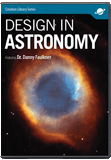
Are Green Pea Galaxies a Problem for Creationists?
Many people have asked Answers in Genesis about the January 14 news account of a study of a green pea galaxy and its supposed relationship to the early universe. Most stars congregate into gravitationally bound structures called galaxies. The sun is part of the Milky Way, a large galaxy containing about two hundred billion stars. It is about one hundred thousand light years across. Dwarf galaxies are much more numerous than large galaxies. Green peas are a rare type of dwarf galaxies, which are, at most, 10% the size of the Milky Way.
The name for green peas comes from their round shape and green color. A galaxy’s color normally is a composite of its stars’ colors. But stars never appear green, so how do green peas get their distinct color? Indeed, it is this question that led to the recognition of the green pea class of galaxies less than a decade ago. The answer lies in very strong emission at a wavelength of 500.7 nanometers (a nanometer is one-billionth of a meter). This is smack in the middle of the green part of the spectrum, and the emission is so strong that it dominates the light of pea galaxies. The emission comes from doubly ionized oxygen in the interstellar medium, the space between the stars in the galaxy.
Large emission of this type is relatively rare, so several conditions must exist for this to happen. There must be abundant oxygen in the interstellar medium. There must be many stars emitting copious amounts of ultraviolet light to ionize the oxygen. There must be little dust present to mute these effects. Astronomers believe that these factors come together only if the stars, and probably the galaxy involved, are very young. But to have so many young stars, the galaxy must have undergone very intense star formation recently. Astronomers call galaxies with high star formation rates “starburst galaxies.”
Of course, this scenario assumes that the universe is billions of years old. But there is more. Astronomers think that the universe began in a big bang 13.8 billion years ago. The first stars and galaxies supposedly formed about a billion years later. According to the theory, stars formed very rapidly at first, so all early galaxies were starburst galaxies, but soon settled into “normal” status. In an old universe, we have to look ten to twelve billion light years away to see starburst galaxies today. However, there are few starburst galaxies that are not nearly as far away, which is the point of this recent study concentrating on J0925+1403, a green pea “only three billion light years” away. Being much closer to us, this dwarf galaxy supposedly gives us a specimen of starburst galaxies that is much easier to observe.
Of particular importance is the huge number of ionizing ultraviolet radiation that a green pea emits. Other galaxies cannot do this. One of the mysteries of cosmology today is the manner in which hydrogen became ionized in the early universe. According to the big bang cosmogony, the universe began as ionized hydrogen (with some helium), but the universe cooled sufficiently so that most hydrogen ceased to be ionized about 380,000 years after the big bang. The existence of neutral hydrogen supposedly allowed clouds of hydrogen and helium to condense into clouds, from which stars and galaxies eventually formed, giving us the structure that we see in the universe today. But then the hydrogen left over from the formation of the first stars mysteriously re-ionized about a billion years after the big bang. Astronomers think that green pea and other similar galaxies may explain this re-ionization, because they might produce enough free ultraviolet radiation to do the job.
How might those who believe in biblical creation respond to this?
How might those who believe in biblical creation respond to this? Green peas are very interesting objects, because they are so different from other galaxies. But the observations themselves do not tell an evolutionary story, because they merely tell us that green peas have unusual amounts of doubly ionized oxygen atoms as compared to other galaxies. Everything else is interpretation. The data concerning green peas has been filtered through belief in a naturalistic origin of the universe over billions of years. Indeed, we have not found green peas at the edge of the observable universe, where they are needed as a rescuing device for the big bang cosmogony. We will continue to monitor green peas, but even in an evolutionary paradigm, there is no compelling reason to accept the evolutionary interpretation of them.
Recommended Resources

Answers in Genesis is an apologetics ministry, dedicated to helping Christians defend their faith and proclaim the good news of Jesus Christ.
- Customer Service 800.778.3390
- © 2024 Answers in Genesis






